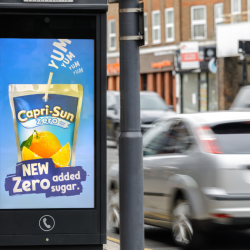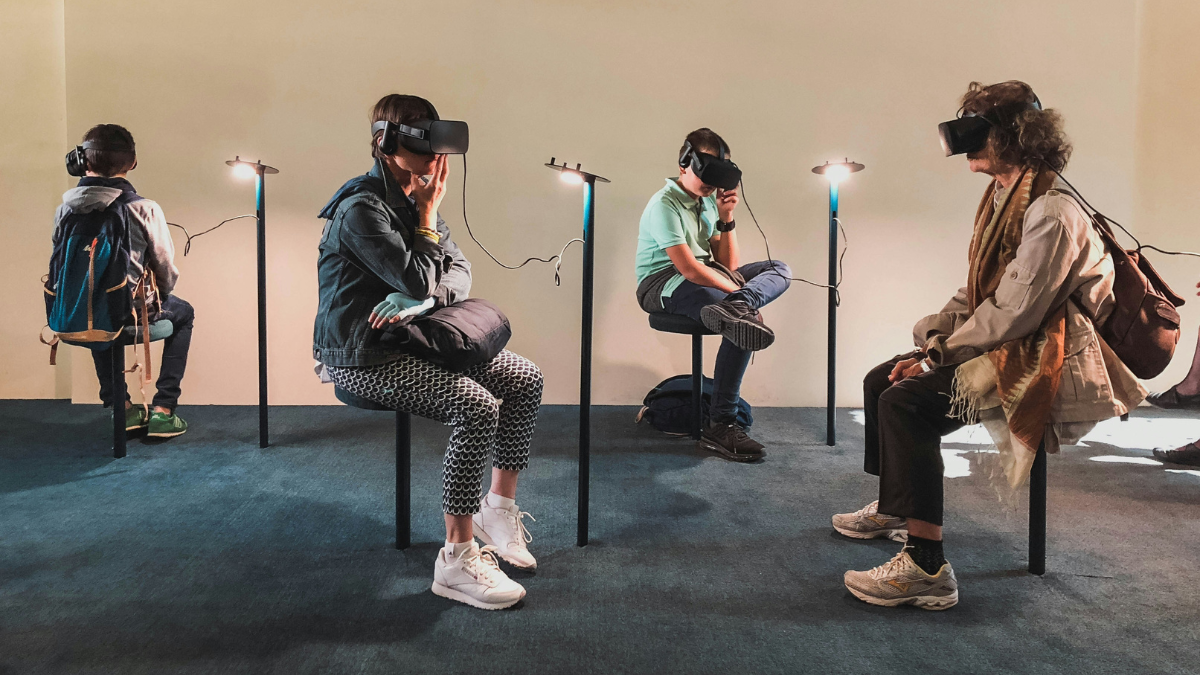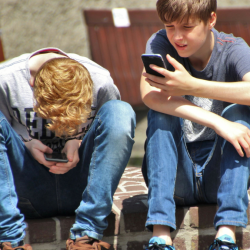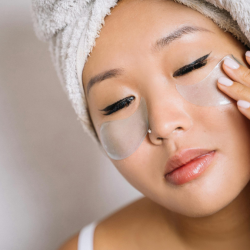From silver screens to smartphones
The journey of fame has taken a fascinating trajectory. In the golden days of Hollywood (take me back), fame was an exclusive club with a strict guest list. Film stars, musicians, artists, authors and TV personalities were the gatekeepers. Their influence was immense, but their reach was limited by the mediums of their time. Fast forward to the 21st century, and the digital revolution we’re in the midst of has democratised fame, making it accessible to anyone with a smartphone and wifi. But is this a good thing?
The democratisation of fame
Social media has broken down the barriers that once separated celebrities from us masses, and the democratisation of fame has officially landed. A 2018 study by the Pew Research Center found that 72% of adults in the U.S. use some form of social media, and many use it to follow their favourite influencers and content creators. These platforms have given rise to a new breed of celeb who builds their brand through, well, content and engagement with their audience.
Consider Charli D’Amelio, who rose to fame on TikTok. With 80 million followers, her influence rivals that of most traditional celebrities, yet her journey starts with lo-fi dance videos filmed live and direct, from her bedroom… But it’s ‘authentic’, I hear you say. Well, it’s more than that. This signifies a profound change in the landscape of fame; it’s no longer about where you come from, but what you create and share. Did you ever expect teachers to hear ‘But Miss, I’m going to be an astronaut influencer!’ I didn’t.
The anatomy of digital fame
Most people would think fame is fame, but this has a different flavour. Think of it as an entity which operates on different principles than traditional celebrity. It’s built on authenticity (tick), accessibility (always on), and community engagement (connection). Followers feel a more personal connection with content creators, often interacting with them directly through comments and messages. This level of engagement and conversation is something traditional media has never offered before, and people want it.
Authenticity and accessibility
So, what is this magic unicorn dust of authenticity and accessibility? Well, it’s a bit like the difference between a handwritten letter and a printed flyer. One feels personal, the other feels generic. Which would you spend your precious time reading? A survey by Stackla found that 86% of consumers say authenticity is important when deciding what brands they like and engage with. Influencers who share their real lives — the struggles and successes — resonate more with audiences. This authenticity builds trust and loyalty, the foundations for maintaining a following. But it’s not for the faint of heart because this ‘authenticity’ takes a lot of planning and effort, and is generally jolly hard work!
Take Emma Chamberlain. Her YouTube channel isn’t a glossy production but a basic, unfiltered look at her life. The epitome of ‘companion content’. Do you ever have the TV on in the background to create ‘atmosphere’, this is the evolution. She edits her videos in a style that feels almost amateurish, yet this is what makes her content so compelling. Her relatability and candidness have won over millions and converted them to subscribers, positioning her as a key media influencer. Brands that collaborate with the likes of Chamberlain tap into their authentic connections with their audiences, creating more meaningful and effective campaigns. These are the partnerships and collabs you’re after.
Brands and collabs
Brands are adapting to this new era, some quicker than others. I remember working on a swimwear campaign where the lead client insisted on using top models for the socials and wondered why women weren’t buying. We persuaded him to switch to ‘real women’, micro-influencers and boom, double-digit sales growth. So, if traditional endorsements are giving way to influencer partnerships, we’re moving people to where the authentic voice and personal brand enhance the appeal of the product, and people feel they’re far more relatable. It’s worth noting, according to a report by Business Insider, the influencer marketing industry reached $15 billion in 2022. That’s not to be sniffed at.
Successful collaborations often hinge on alignment with the influencer’s personal brand. The Swedish watch brand, Daniel Wellington, leveraged Instagram to build its brand. By partnering with micro-influencers who genuinely liked their products, they created a buzz that traditional advertising could never achieve, and at a fraction of the cost. The key here is that these partnerships look, feel, and are organic rather than forced. But there’s a curveball; these influencers are realising, why on earth should they work with these brands for a fraction of what they could make if they launched their own? Cue sea of startups.
The future of fame
As digital platforms continue to evolve, so too will the concept of fame, and we all know which industry actually leads tech (it rhymes with corn). I’ll never forget a talk on UX at SXSW when the date and design of a certain ‘hub’ was on the screen and then a shot of the world’s leading main streaming platform; surprise, they were identical.
I would hazard a guess that the future of personalisation and data may be influenced by the corn site too. Now, I’m guessing here, but with emerging technologies like VR and AR (are they still emerging?), we are poised to create new forms of engagement and celebrity. You can already go to a gig in VR, interact with the performer in real-time, or follow an AR influencer who guides you through virtual experiences. This means the lines between the virtual and real worlds will blur even further, offering unprecedented opportunities for new types of fame. I really do wonder what will come next.
Embrace the evolution
Now, if you’re a purist, you could get all sniffy about it. And yes, one day it’s likely your kids are going to be huge fans of an AI celeb influencer, but if you work in brand, marketing, and any kind of business growth, you’re going to need to embrace the evolution. From silver screens to smartphones, it’s been a seismic shift in how we perceive and engage with celebs.
For brands, this evolution offers unprecedented opportunities to connect with consumers in authentic and impactful ways, embracing the principles of digital fame; authenticity, accessibility, and community engagement. Brands can navigate this new landscape and leverage the power of influencers to build stronger connections with their audience than ever before. In this ever-changing circus, those who adapt and innovate will be the ones who truly capture the spotlight. So, whether you’re a brand or an aspiring influencer, it’s time to redefine what it means to be famous in the digital age.
Featured image: influencer Emma Chamberlain































